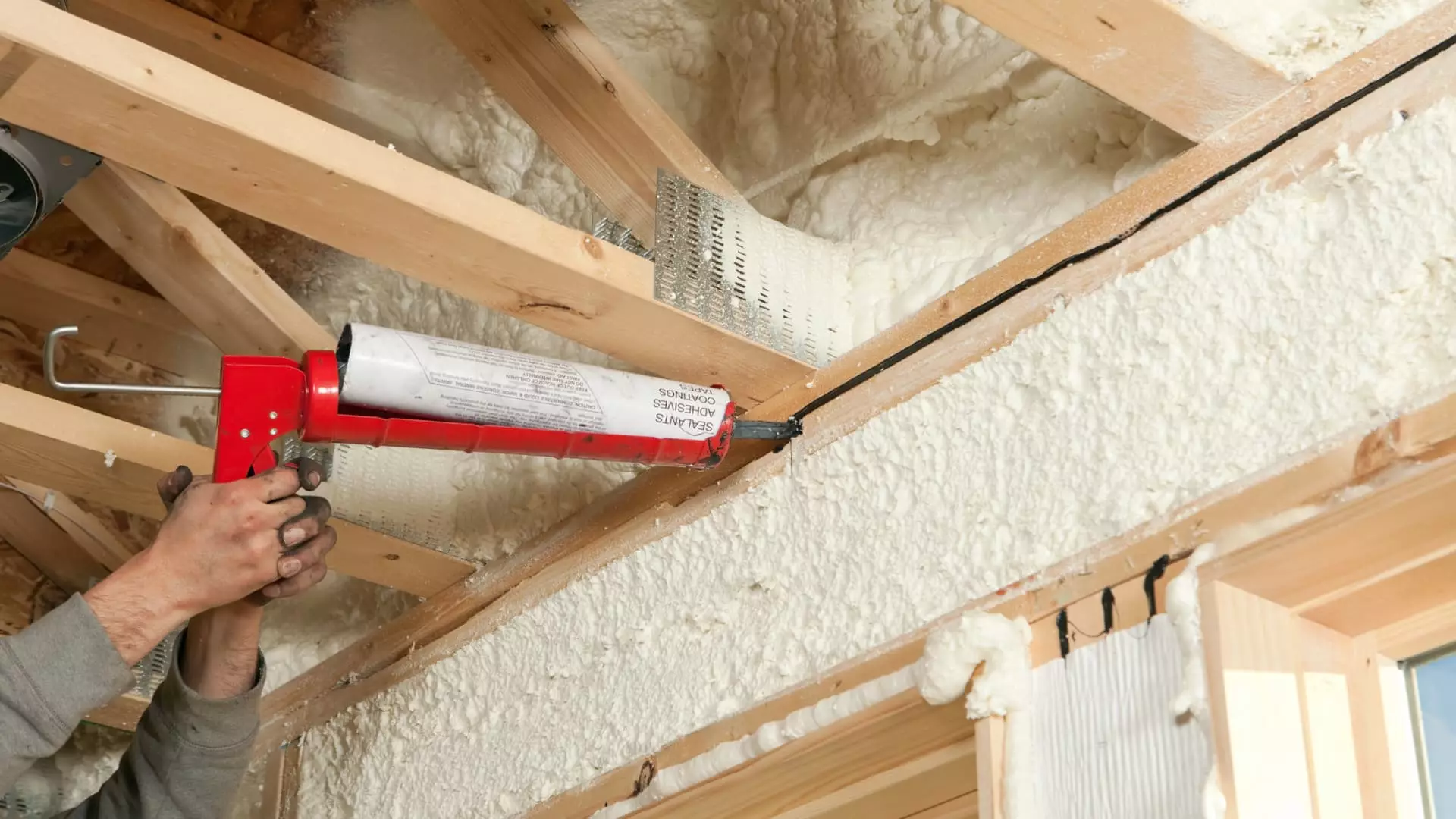In an age where environmental consciousness is at an all-time high, the dream of owning an energy-efficient home can quickly become a bitter pill to swallow. Take the tale of Megan Moritz, who purchased her ideal 1,400-square-foot residence in Arlington Heights, Illinois, only to discover that the charming vintage aspects of her home from the 1930s came with dire consequences—severe energy inefficiency. Moritz’s experience serves as a microcosm of what many new homeowners face: the gaping chasm between the reality of home expenses and the illusion of sustainability.
Moritz invested nearly $5,700 into making her home more energy-efficient. While the upfront cost seemed daunting, she saw phenomenal results—an estimated 67% reduction in her gas heating bill during winter. Yet, let us not be blinded by success stories; the path to energy efficiency appears riddled with red tape and government contradictions. Yes, Moritz ended up with a toasty home and a smaller monthly bill, but how many homeowners get caught in the initial investment trap?
Incentives at Risk: The Looming Tax Threat
While Moritz enjoyed the fruits of her labor—her heating bills dropping to $102 from a staggering $311 in just two years—the benefits she reaped were underpinned by the grace of the federal tax break. However, as the political landscape shifts, these incentives for energy retrofits are increasingly at risk. Republicans in Congress have made noises suggesting that such taxpayer-funded programs could be on the chopping block, which raises an unsettling question: at what cost are we willing to improve energy efficiency?
What politicians often forget is that policies intended to promote environmental sustainability can inadvertently stifle the very people they aim to help. Here we see a classic example of partisan politics threatening to leave concerned homeowners in a lurch. With approximately 2.3 million taxpayers like Moritz relying on credits up to $3,200 for energy-related home improvements, it’s outrageous how easily these financial lifelines can disappear.
The Tax Credit Myth: Benefits for the Select Few
The 25C tax credit may appear benevolent, covering up to 30% of qualifying energy-efficient projects. However, this affordability is skewed in favor of higher-income households, who typically have a tax liability to even claim the credit. The system is not rigged against the average worker but rather complex enough to create disparities. It’s an ironic twist: while the ethical rationale for such tax credits revolves around environmental protection, the advantages tend to accrue to those least in need of assistance.
Blair Kennedy, another homeowner invested in energy efficiency, expects to lower his net costs to approximately $5,000 after potential tax credits. He acknowledges that without these credits, his decision might have tilted in a less eco-friendly direction. This phenomenon underlines a critical point: financial incentives are essentially required unless we plan to abandon environmental ideals altogether, revealing the hollowness of the government’s commitment to energy efficiency for all.
Showering Dollars on Large Households
The overarching narrative is that making homes energy-efficient equates to reducing greenhouse gas emissions, which in theory is noble. Yet, it’s important to examine the actual outcomes. While the IRS data indicates that only about 600,000 households with lower incomes benefited from the energy credits, this raises a glaring issue. Are taxpayers inadvertently pouring dollars into an initiative that disproportionately benefits wealthy households while neglecting those who earn less?
The Inflation Reduction Act, while a historic piece of legislation aiming to combat climate change, inherently lacks the equitable distribution we desperately need. The fact that 85% of clean-energy investments occur in Republican districts adds a layer of irony; these areas may reap the rewards while resistant to the ranching of tax cuts for such programs.
Energy Inefficiency: The Real Enemy
Homeowners’ anxiety around energy costs often leads them to embrace energy audits and retrofitting. Many regard these upgrades as a sensible investment with a payoff in energy savings; however, the minimum five-to-ten-year return on investment can seem like a lifetime in denial for many households struggling with sky-high bills. Coupled with a need for immediate financial relief, one can’t help but question if the energy sector is failing the public instead of aiding it.
Kennedy’s motivation to initiate efficiency projects arose from a dizzying January bill of around $1,000. This panic-driven urgency might prompt many to take action but ultimately underscores just how dire the situation is for families living paycheck to paycheck. They simply cannot afford the upfront costs for a long-term benefit while the government squabbles over the future of tax credits.
Homeowners like Kennedy and Moritz are fed up with the ineffective incentives and are caught in the crossfire of a political agenda that risks dismantling their hard-won energy savings. The story of energy efficiency remains one of hidden costs, broken promises, and an inept political system barely sputtering toward sustainability, all while ordinary Americans pay the price.

